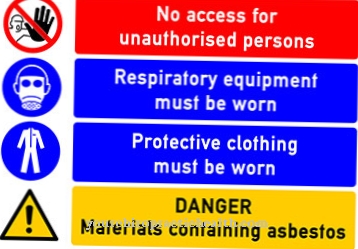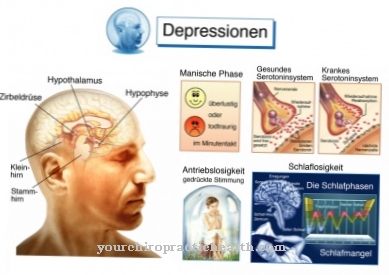Under Köhler's disease II Aseptic necrosis of the bone (mainly the metatarsal bone or segments II to IV) is described. Above all, Köhler's disease II, in contrast to Köhler's disease I, occurs mainly in young women and girls.
What is Köhler's disease II?

© falco47 - stock.adobe.com
Köhler's disease II represents aseptic bone necrosis of the second metatarsal head.
Girls between the ages of 12 and 18 are particularly affected.
The causes of the disease have not yet been adequately clarified.
The disease is also among the synonyms Köhler-Freiberg's disease, Freiberg Koehler's disease, Juvenile osteochondrosis of the metatarsus or Osteochondrosis of the metatarsal heads known.
causes
The reasons why Koehler II disease develops has not yet been clarified. However, doctors assume that shoes that are too tight or high-heeled can very well promote the disease. However, this theory has not yet been clearly proven. Sometimes the theory of overload is also represented.
If the bone is permanently overloaded, this represents a favorable factor for Köhler's disease II. A trauma, which subsequently causes a misalignment of the foot, can sometimes trigger Köhler's disease II. However, these are only theories; The reason why Köhler's disease occurs has not yet been fully clarified.
Symptoms, ailments & signs
The affected person initially complains of pain in the foot. Most of the pain occurs when the foot is put under pressure. Parents and medical professionals, however, cannot perceive any external injuries or changes; sometimes the only indication is swelling in the affected area.
It is possible that the swelling may also appear in the front area; the swelling will increase if the foot continues to be stressed while it is painful. Affected people say that rolling movements cause pain; In the advanced stage of Köhler's disease, the classic painful limp occurs, which subsequently leads to a relieving posture or a gentle gait.
Diagnosis & course of disease
If Köhler's disease is suspected, the doctor must carry out various examinations so that the suspected diagnosis can be confirmed. To do this, an X-ray of the foot is made. The foot is x-rayed once from the side and then from above. While in Köhler's disease I a narrowing and compression of the scaphoid bone is visible, the doctor recognizes a flattening and shortening of the metatarsal bone in Köhler's disease II.
If Köhler's disease is already at an advanced stage, the doctor can detect any changes in the so-called metatarsophalangeal joint. This change also causes severe pain when walking or rolling. It is important that - if the first changes in the metatarsophalangeal joint are already recognizable - therapies are carried out here so that further damage can be prevented.
This is the only way to avoid permanent damage to the patient. The course of the disease mainly depends on whether and how quickly a so-called revascularization of the bone takes place. For this reason, it is beneficial if the diagnosis is made at an earlier stage. Operations are usually required; This is also because Köhler's disease II is usually diagnosed relatively late.
In many cases, the damage cannot be repaired in such a way that the original state is achieved, so that the patient feels slight discomfort for the rest of his life. In exceptional cases, the sole of the foot has to be stiffened, which sometimes means restrictions in mobility.
Complications
In most cases, Köhler's disease II primarily leads to severe pain and other unpleasant complaints in the feet. The pain can be burning or stabbing and lead to sleep disorders, especially at night.It is not uncommon for sleep problems to lead to irritation in the patient and can significantly reduce resilience.
Those affected feel tired and exhausted from the illness and usually do not take an active part in life. The pain occurs especially when the feet are put under pressure, so that there are significant restrictions and discomfort in movement. Children can no longer do sports and Koehler II's disease disrupts their development. It is not uncommon for a severe swelling to occur on the foot, which makes the patient's everyday life much more difficult.
There are no particular complications in the treatment of Köhler's disease. The symptoms can be limited and reduced relatively well either through an operation or through various therapies. As a rule, however, the person affected is no longer allowed to put too much strain on his foot. However, life expectancy is not reduced by this disease.
When should you go to the doctor?
Girls between the ages of twelve and eighteen are primarily affected by Köhler's disease II. If those affected in this risk group experience changes in their health or irregularities, they should see a doctor. Pain in the foot, visual abnormalities of the foot or toes as well as a change in locomotion must be examined by a doctor. You should refrain from taking any pain medication until you have consulted your doctor. It is characteristic of the disease that there are often no external injuries. However, swelling or slight thickening are signs of impaired health.
A visit to the doctor is advisable as soon as there is a reduced physical performance or sports activities can no longer be performed as usual. If the person concerned takes a relieving posture due to the symptoms, if the body is tilted overall or if a limp occurs, a doctor is required.
If, in addition to the physical symptoms, there are also emotional or mental abnormalities, a visit to a doctor is recommended. Although the affected person is in puberty, withdrawal from social life, changes in behavior or mood swings can also be indications of an additional health disorder that should be investigated and clarified.
Treatment & Therapy
In the case of Köhler's disease II, the physician has two therapy options: conservative and surgical. If the doctor decides in favor of conservative therapy, attention is primarily paid to promoting blood flow and also relieving the foot.
If Köhler's disease is detected in the early stages or there are only minor symptoms and the symptoms are so minor that there are no actual restrictions, a ban on sports and immobilization of the foot (e.g. with relieving bandages) can be positive. Sometimes the doctor can also put on a lower leg cast, which is removed after six weeks.
Other options that are available in the context of conservative therapy are insoles or physiotherapeutic measures. Methods that promote blood circulation, for example by applying certain ointments, can alleviate the symptoms and also provide direct treatment for Köhler's disease.
However, if the conservative therapy is unsuccessful or if Köhler's disease is only diagnosed at an advanced stage, the doctor must consider surgical treatment. A few years ago, drilling was carried out; Today medicine knows that this surgical technique did not produce convincing results.
If there is little wear and tear on the joints, an articulated toilet is mainly used. If there is a degenerative change in the upper half of the metatarsal head, a dorsal wedge osteotomy with fixation is performed. This method has asserted itself and is preferred when the medical professional is of the opinion that only one operation can actually improve the patient's quality of life.
You can find your medication here
➔ Medicines for painOutlook & forecast
Köhler's disease II is usually diagnosed at a late stage, which means that there is little chance of a cure. Those affected therefore have to deal with restrictions. An operation usually takes place, but doctors cannot restore the original condition. The prognosis is therefore mixed. Certain sports and long-term stress should then be avoided. A shortening of the lifetime does not result from Köhler's disease, however.
The disease occurs mainly in girls. Statistical surveys show that there are four females for every male patient. The greatest risk of discomfort lies between the ages of 12 and 18. If treatment is turned down, osteoarthritis regularly develops in adulthood. Pain when exercising, but also when resting, is given daily. Many patients have to use aids such as insoles in order to achieve a symptom-free movement.
The best prospects arise if Köhler's disease is diagnosed before osteoarthritis develops. Stiffeners cannot always be removed. Conservative procedures are generally to be preferred. They allow the best treatment success in the early stages without surgical intervention.
prevention
Due to the fact that no causes are known so far, no preventive measures can be taken to prevent Köhler's disease II. It is advisable to contact a doctor immediately if the first signs suggest that it might be Koehler II disease. The earlier the diagnosis is made, the higher the chances of a positive course of the disease and a good prognosis.
Aftercare
After completing therapy, patients need to have their feet checked regularly. An orthopedic surgeon checks whether the metatarsal heads are relieved by feeling the metatarsus (palpation) and using imaging methods such as an X-ray. If the disease has caused the bones to soften, the doctor will also check whether the bone structure has solidified after the treatment.
The doctor may also do a blood count to check for any signs of bacteria. In most cases, however, this step is omitted. It is much more important that regular checks are carried out to determine whether a prescribed soft cushioning insert or a shoe modification in the form of a butterfly roll still offers sufficient relief.
Since the soft padding compresses over time under constant stress, patients who have Koehler II disease regularly need new insoles or new soft padding for their shoes. If the pad is too worn out, there is a risk that the metatarsal heads will again become excessively stressed. This can lead to a recurrence of the disease despite a completed therapy.
In order to permanently improve the blood circulation in the feet, patients are often given a series of small exercises at home so that they move their feet and relieve them. In this way, the health of the feet can be further improved.
You can do that yourself
In the case of Köhler's disease, the focus is on those affected to relieve the foot. A shoe adjustment called a "butterfly roll" can help, in which the area under the painful metatarsal bones is very softly padded. This means that there is no pressure pain when walking and the feet can roll more easily. Soft padding for the shoes can also help to relieve the strain.
In order to promote the blood circulation in the foot bones, foot exercises are very important. Massage devices like the hedgehog ball are often used to stimulate the blood circulation through small pressure points and at the same time to train the muscles under the bones. Patients can do small exercises in the comfort of their own home as they require little time and effort. Foot baths and curd compresses can also help.
Most important, however, is that those affected do not put unnecessary strain on their feet. Avoid sport or prolonged standing activities until blood flow to the bones has improved. For women, it is also true that they are not allowed to wear high-heeled shoes, but rather use shoes with flat heels. In addition, the feet should be put up more often or relieved by sitting down briefly to prevent the worsening of Köhler's disease II.



.jpg)

.jpg)







.jpg)

.jpg)
.jpg)











.jpg)